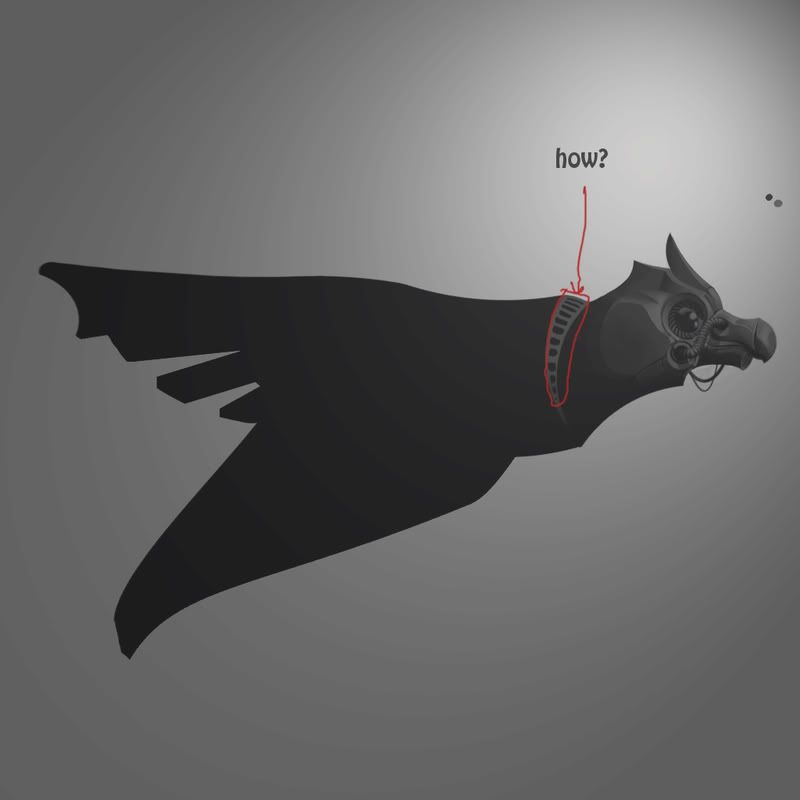The BRAWL² Tournament Challenge has been announced!
It starts May 12, and ends Oct 17. Let's see what you got!
https://polycount.com/discussion/237047/the-brawl²-tournament
It starts May 12, and ends Oct 17. Let's see what you got!
https://polycount.com/discussion/237047/the-brawl²-tournament
Perspective Drawing's a bitch

I've run into this problem multiple times in my art and I have no idea how to get around it other than building a 3D equivalent and using it as reference. I don't see how the vanishing-point method is applicable in this situation. . Any insight on how to do perspective drawing on a curved surface as accurate as possible?

Replies
Another idea I was taught is to draw lines over the body that follow the organic curve... the perspective of the piece that is added on top should follow that. Meaning, draw many even lines in the direction the body/muslces/frame are moving, and the perspective they are in. When you have those lines down, try building the piece back on top of that.
Sorry, I hope that wasn't more confusing than it needed to be... good luck with it!
Nevertheless, I'm at my parents now, and if I can find the time, I'll have a root through my school-stuff to see if I have any notes from class. It's a bit of a hectic visit though, so I'm sorry if I don't get around to it.
http://www.thegnomonworkshop.com/img/gallery/gallery_pops/robertson/robertson_e.jpg
Draw a line for the height of your circle, lines to the vanishing point from top, middle and bottom. Then you fill in the lines to the side so you have a perspective square with a cross in it. Remember that in perspective the middle is closer to the perspective point that the "actual" middle as you flat measure it.
Now go ahead and make that circle, which will be an ellipse in perspective, ellipses are hard but I'll try to get it across. The ellips is symmetrical across it's minor-axis, divided by the middle line going to the vanishing point. ( http://en.wikipedia.org/wiki/Ellipse) It's line run tangent to the sides of the plane you just drew in the mid-points, so you can start by making almost tangents little roundings at those places. I was thaught to draw ellipses from hand in one motion, going back the other way if not perfect the first time.
This might help too
http://www.sibleyfineart.com/index.htm?tutorial--draw-ellipses.htm
Now that you have a circle of your collar you can alter that to your liking into something more complex in perspective. You can "copy" that across by using diagonals, draw a line from the corner of the plane to the middle, same at the other side of the middle. Now where your curved line crosses the diagonal, you can set a line out from there to the vanishing point, where that hits the diagonal on the other side of the middle, is where this point of the curve shuold be.
I've only yet gotten drawing 1&2 classes, but this is what comes to mind. There might be better artists that know better hehe, I'd be interested to see your take on this.
Sorry for the lenghty post, hope it helps.
http://draw123.com/